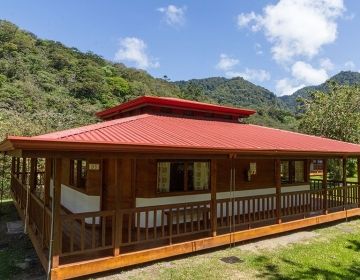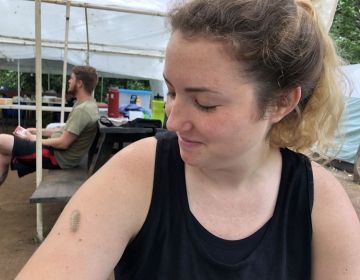Independent Research Projects: Part I
The Tropical Ecology & Conservation students are working on their independent projects right now, many different ecology topics are being cover that involve both field and lab work. From Leaf-cutting ants to hummingbirds the students choose the systems they want to work with and develop this idea going through all the steps of a scientific research.
Here are some of the projects happening during the Spring 2019 program:
Zoe Osborne from the University of Pennsylvania studying the flower selection of different species of hummingbirds in the cloud forest. For this project Zoe is using hummingbird feeders with 5 different shapes and lenghts of flowers and 2 different concentrations of sugar that simulate what is found naturally in the field. Then she counts the number of visits of the different species of hummingbirds for 15 minutes per each feeder.
From Whitman College, Laurel Richardson's project is about the impact of forest edge on the diversity and abundance of leaf-litter arthropods. For this Laurel collects leaf-litter samples a 5 different distances from the forest edge, then she brings those samples to the lab where she puts them in berlese funnel traps to separate the arthropods from the leaves, once the samples are separated she classifies the arthropods in different orders and identify them to genera, species or morpho-species.
Abbie Philbrick from George Washington University is studying the effect of soil pH and the growth of understory plants in 2 different plots; one plot has an introduce species of pine tree and the other one has regenarated with native species. Abbie collected soil samples from each patch and measure the pH for each sample, on each plot Abbie also indentify and count the number of plants below 1.5 meters in height to see if the different forest patches have a different understory composition.
Kaitlyn Strub from the University of Minnesota-Twin Cities is studying the effect of wind in the size and shape of the load carry by Leaf-cutting Ants (Atta cephalotes). Kaitlyn is measuring the size of the ants and the size and shape of the leaf fragments they are carrying while measuring the wind speed and seeing if this is affecting the selection by the ants; Kaitlyn is also using fans to add wind to the foraging trails of the ants and see it this makes them change the size of fragments they are carrying. Kaitlyn's final experiment is to give the option of different sizes and shapes to the ants on their foraging trails and see which ones do they prefere to take.
Related Posts
CIEE Monteverde Campus Used in Insect and Light Research Study
Have you ever wondered why insects are drawn to artificial light? From campfires to porch lightbulbs, moths and other insects appear to congregate around these sources of light as soon... keep reading
Our program through the eyes of a Student
Our Summer student Maddie Beale from the State University of New York at Fedonia wrote a blog about how she found us, the process of choosing our program and the... keep reading
Pura Vida en Costa Rica: Atlantic Slope
Our second field trip starts with a visit to the San Gerardo Station, this station located a little above 1000 meters in elevation is part of the Children's Eternal Rain... keep reading













